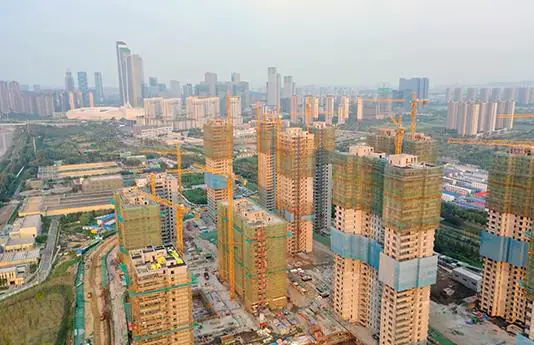Professor Liu Jing – Professor of Accounting and Finance, Director of Investment Research Center, CKGSB
While the “Three Red Lines” policy was an attempt to help overleveraged companies, it was also originally introduced because regulators thought the industry was too profitable – that it was accumulating large amounts of capital and driving up house prices.
But after conducting an analysis, we found that the rate of return for real estate developers was not significantly high. From 2005 to 2020, the net profit margins of Chinese companies listed on the Hong Kong Stock Exchange was only 10%, the average return on equity (ROE) was 11%, and the average return on invested assets (ROIC) was only 5.7%.
So why are real estate net profit margins 10%, but return on invested assets only 5.7%? This is because the investment turnover ratio (how efficiently a company uses its debt and equity to produce revenue) was only 45%. This is a result of houses taking two years to be completed from investment to sale.
If a real estate developer can only earn 10% of a project’s sales revenue, where does the rest of the money go? We found out that from a sale, the government will take 54% (40% is counted as land tax and 14% are various other taxes and fees), construction costs account for 30%, employee salaries make up 4% and 1.7% are other financial expenses.
Therefore, in the long run, if shockwaves are felt across the real estate industry, the government is going to suffer the greatest setback. Next will be construction companies upstream, suppliers and interior designers, followed finally by the real estate companies themselves and their employees.
Of course, in the short term, those who will be most severely affected will be the homeowners who have paid deposits and the financial institutions that provide credit.
The next question to address is how real estate companies make a profit margin of 10%? While part of it does come from their professional expertise on a project, such as the ideas, planning, design and resource integration, a large part comes from the rise in land prices. In the past 15 years, land prices in China have increased by more than 10%. If developers hoard this land and not build on it they can achieve high rates of return.
According to data released by the National Bureau of Statistics, developers bought up 4.2 billion square meters of land from 2001 to 2011. In the same period the total area of completed housing was 6.5 billion square meters. Assuming that the average floor area ratio (land size to floor area) is 2.5 across 100 cities in China – by calculation the land which developers owned should have been 2.6 billion. This means they are hoarding 1.6 billion square meters of land.
To prevent land hoarding, the Ministry of Land and Resources published a set of regulations, establishing that if land has not been developed on for a year, property companies would be charged a levy of 20% of the land transfer fee; and if land has not been developed on for two years, the State has the right to re-claim the land without compensation. After this, land hoarding declined significantly: from 2012 to 2020, developers purchased 2.6 billion square meters of land and completed 3.6 billion square meters of housing.
Moreover, real estate companies in China have altered their business models overtime. Whereas before they acted as investors and service providers, nowadays they have taken on the role of housebuilders.
To read the next article in the series, head to the article below: 3. “The Two Bubbles in China’s Property Market”.






















